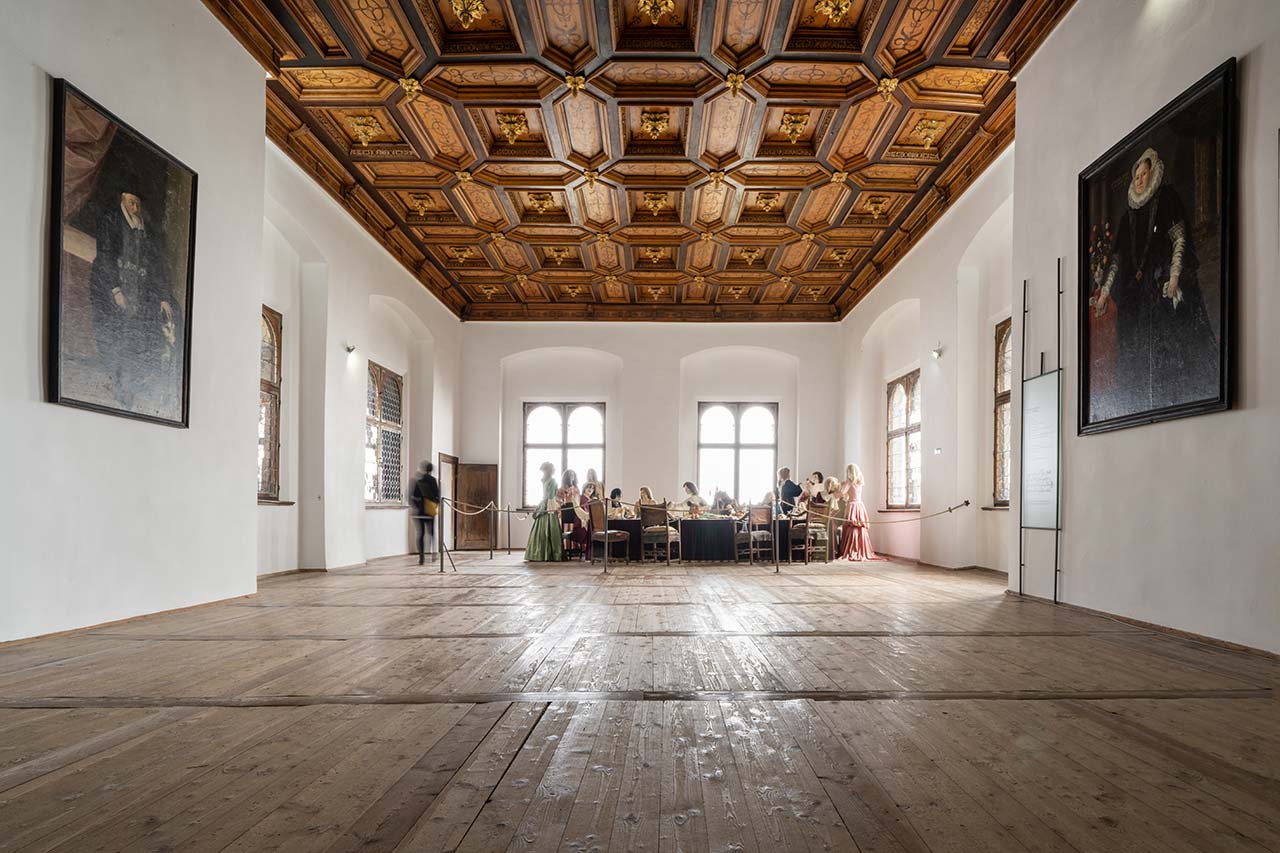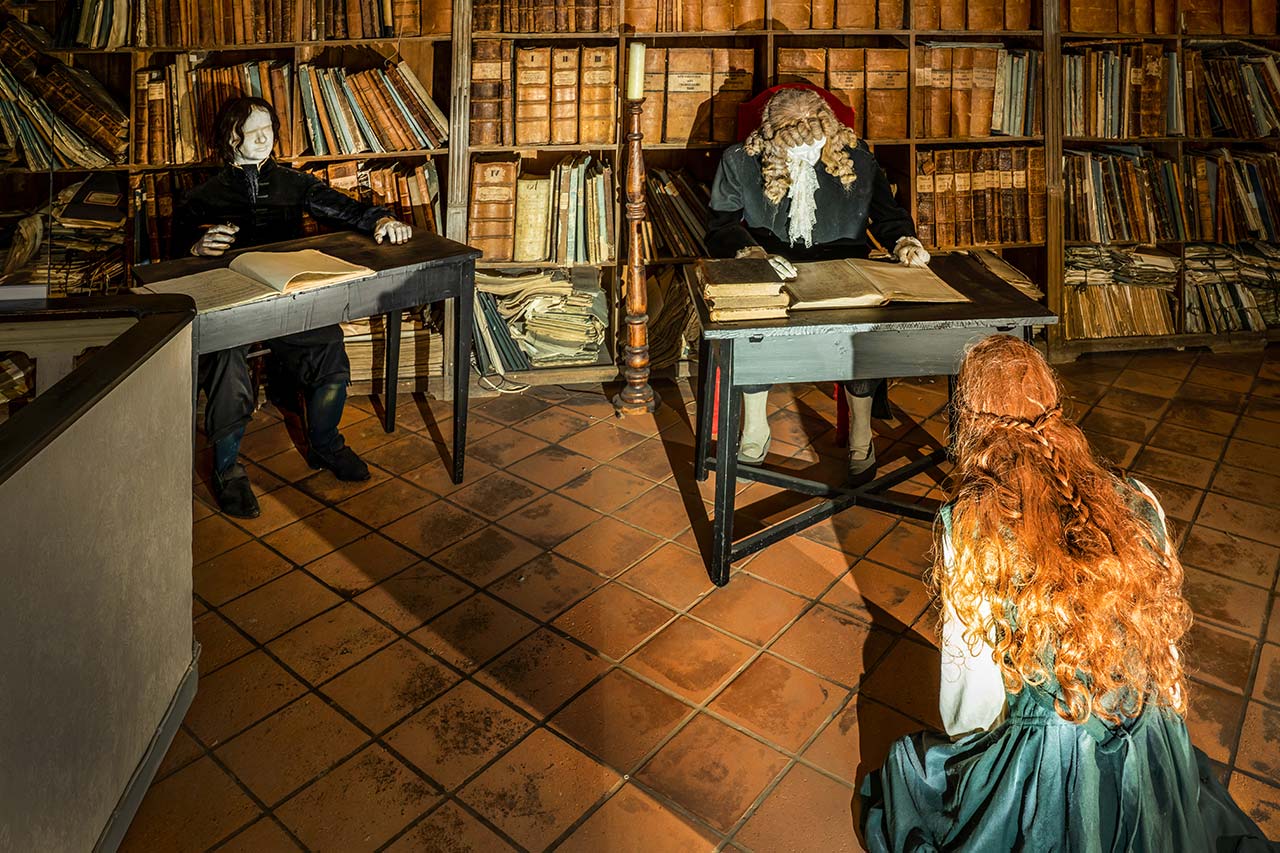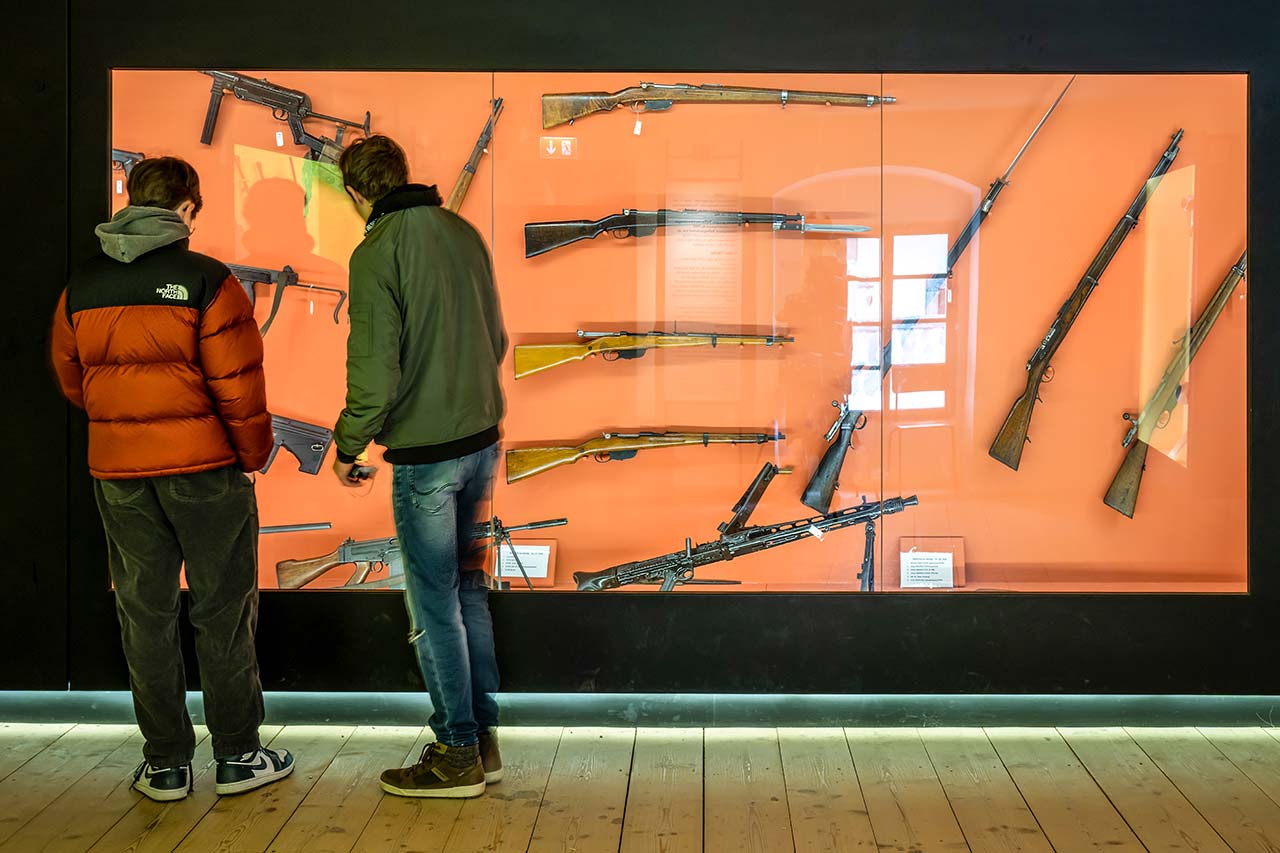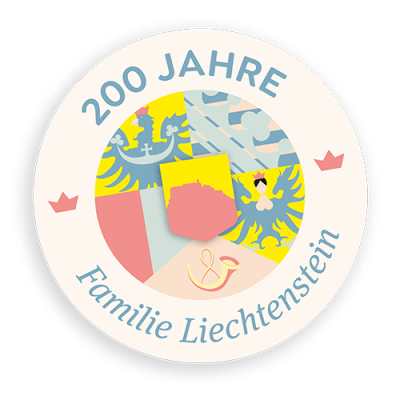THE MUSEUMS OF THE RIEGERSBURG
Hardly any other castle complex is as impressive as the mighty Veste Riegersburg.
Seven gates, eleven bastions, four kilometers of defensive walls and two moats protect the castle!
Inside the castle there is a lot to discover: Explore the beautiful state rooms and courtyards.
Learn many interesting things and let yourself be inspired in the castle, witch and weapon museums.
You can experience the museums even more intensively with our audio guides or on guided tours with our experienced castle guides.


CASTLE MUSEUM
The museum with its state rooms offers a journey into the history of Riegersburg Castle in the 17th century. Two women's fates in the time of Turkish wars, compulsory labor and witch mania, but also baroque joie de vivre and festive culture.
Elisabeth Katharina von Galler, a lady of the castle from 1637 to 1672, went down in history as the "Bad Liesl" because of her unconventional life. The mere fact that the Galleress did not allow herself to be laced into the tight corset of norms into which women were pressed in the 17th century, but led a self-determined life, was reason enough for such an epithet.
The fate of Katharina Paldauf, a servant of the Gallerin, leads to the examination of one of the darkest chapters in the history of eastern Styria, the great Feldbach witch trial, one of about 200 Styrian witch trials. Katharina Paldauf, still belittlingly referred to as the "Flower Witch," was one of the victims executed on suspicion of having destroyed the farmers' harvest by making hail and weather.
No wonder that these two fates provided fertile ground for a rich creation of legends, and the "legendary" stories about the two women are now better known than their true ones.
But also the contrast between aristocratic life and baroque affluence on the one hand and poverty, superstition and Turkish wars on the other hand becomes clear in the castle museum. Spatial, video and sound installations allow a combination of experiencing and experiencing.
WITCH MUSEUM
The Witch Museum was redesigned in 2017 and made more contemporary. Videos and sound installations as well as informative texts convey a comprehensible picture of a time and a mindset that are on the one hand foreign to us, but on the other hand perhaps all too familiar. After all, topics such as exclusion, persecution, etc. are as topical as ever.
Especially in the 17th century - until the middle of the 18th century - about 300 alleged witches and sorcerers were tried in Styria. It was not only outsiders and the socially disadvantaged who ran the risk of being charged with the most outlandish accusations and ultimately executed. In the newly designed rooms, visitors can gain insight into this dark and mysterious chapter of the region's history.
At the largest Styrian witch trial in Feldbach from 1673 to 1675, among the approximately 95 accused men and women was Katharina Paldauf, the castle keeper's wife of Riegersburg, who became known above all as the Riegersburg "Flower Witch".
The Museum of Witches dates back to the Styrian Provincial Exhibition "Witches and Sorcerers" in 1987. This provincial exhibition was one of the most successful ever, attracting about 360,000 visitors. In 1988 the exhibition was reduced to about half of the rooms and successfully continued as the "Witch Museum".


WEAPONS MUSEUM
The collection in the Weapons Museum consists of armor and armor parts, sabers and rapiers, various cutting and embroidery weapons, rifles of various types, pistols and much more.
The chronological arc spans from the late Middle Ages, 15th century, through our main focus, the 17th century, to the modern age. Craftsmanship and technical skills from over 400 years. It is not surprising that most of the exhibits are from the 17th century, as Riegersburg Castle was known at that time as the "strongest fortress in Christendom".
The thematic focus is on weapons for battle, for hunting, and for pageantry and pleasure.
The visitor is involved in the museum, which means: touching selected objects and handling them is explicitly desired.
SPECIAL EXHIBITION
For 200 years, which is Family Of Liechtenstein the Riegersburg is connected. As long as no family in front of it.
On October 22, 1822, Prince Johann I bought the Riegersburg at auction. On the occasion of this anniversary there is a special exhibition in the armory of the Riegersburg (between 1st and 2nd bridge). The connection of the history of the Riegersburg with personalities from the family was artistically interpreted by an artist from our region - Andreas Stern. The exhibition was accompanied scientifically and historically by Dr. Gerhard Fischer, who has already done a lot of research on the family in Western Styria in recent years.
In the course of the research, many interesting, exciting and previously unknown stories have been brought to light. For example, that Johann Josef had a summer castle built at the foot of Riegersburg, Franz de Paula wanted to demolish the castle to ruins about 170 years ago, or Alfred Geza supplied the Vatican with fruit from Riegersburg. For this purpose we have collected many photos, letters and diary entries.
The special exhibition "200 years of the Liechtenstein family in Riegersburg" is open until November 5, 2023 and is located in the armory of Riegersburg (between 1st and 2nd bridge).




